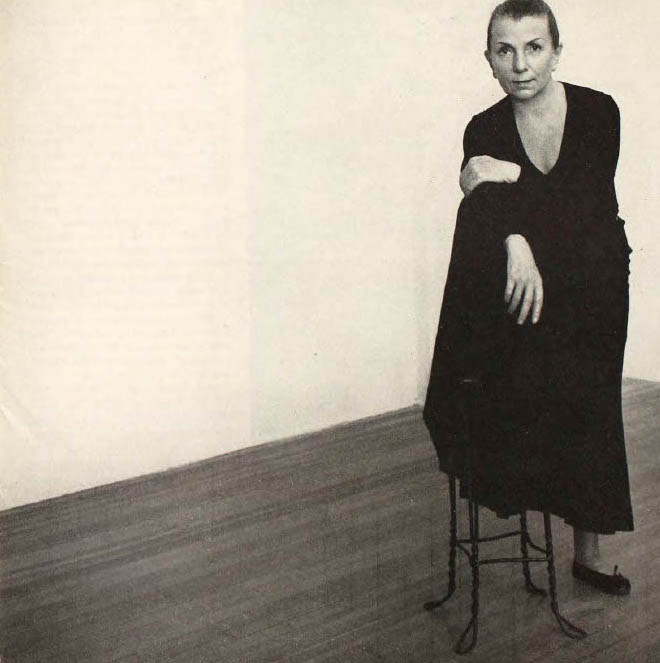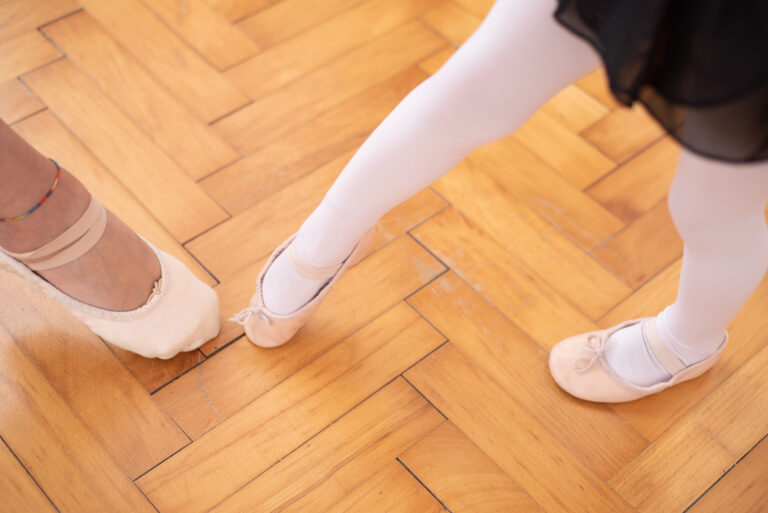
Susan Pilarre has been closely tied to the School of American Ballet for nearly her entire life.
From her first class there at age 11 through her 16-year career with its affiliated company, New York City Ballet, Pilarre learned directly from the great choreographer George Balanchine, absorbing the details of his unique style. Sensing her innate understanding of his principles, Balanchine encouraged her to teach; she joined SAB’s permanent faculty in 1986. Since then, she has become recognized as an authority on Balanchine’s teachings, instilling SAB and NYCB’s distinctive speed, clarity and energy into generations of dancers.
Here, Pilarre shares how the specifics that Balanchine insisted upon in class contribute to the strength, beauty and musicality that define his style—and dispels common misconceptions.
1 “Every step is a sandwich on plié bread”
“Plié is completely paramount in Balanchine technique,” says Pilarre. “You don’t have anything without it. I often say every step is a sandwich on plié bread.” To achieve the pliant, elastic quality Balanchine wanted (he famously urged his dancers to land as softly as cats), he had them land jumps with their weight forward over their toes, never quite letting their heels touch the floor—not actively picking them up, as is commonly misperceived. When executing a demi-plié from a standing position, he asked for a slight release of the heels.
“The misunderstanding is that people think you lift your heels and let them come way off the ground,” Pilarre says. “Mr. B used to say, ‘Slip a piece of paper under your heels.’ It’s important for soft landings that your torso is forward, in front of your hips, that you land in your toes.”
2 A pirouette surprise
One of Balanchine’s core objectives was to de-emphasize, or hide, preparations. “He didn’t want us to broadcast ‘Now I will pirouette,'” Pilarre explains. He thought the traditional fourth position in demi-plié encouraged “sitting” in the preparation, slightly delaying takeoff and disrupting the flow of movement. “One day he said, ‘We’re not going to turn like that anymore.’ He wanted us to simply tombé into a long fourth position, as if we were going to do another step, and then voilá—you just turned. The pirouette comes out of nowhere.” She adds that while the back leg is straight, it should not be not stiff.
3 Spot for the audience
Spotting the front, another Balanchine trademark, was intended to better present the dancer and engage the audience, particularly during turns along the diagonal. “Spotting the wing advertises that you’re about to exit,” she says. “It’s all about the people we’re performing for. You’re not performing for the wings.”
4 “The wrists and elbows are a team”
Balanchine wanted his dancers to sculpt their hands like pieces of art, shaping each finger individually. “The cup of the hand is rounded, and the thumb and pinky are completely separated from the other fingers, but they’re not stiff. You should be able to wiggle your fingers,” says Pilarre. Épaulement, intrinsically coordinated with the arms and hands, was particularly important to him—the look includes a gracefully curved neck, as if offering one’s cheek for a kiss.
Elbows and wrists are supple and move with energy and intention, “taking” the dancer into each step. They often cross as they move through positions. “The joints move a lot, but with strength,” says Pilarre. “The wrists and elbows are a team: You bring the elbows in, lift the wrists and the hands go up, and reverse that to bring them down.” In a piqué arabesque, for example, she teaches students to lead, energetically, with the hand, arm and head. “You’re always moving with your head and hands first, initiating it. It’s more exciting-looking, and it creates musicality that you don’t get if the hands are droopy or drippy.”
5 Move, fly, spring into action
Balanchine ballets are known for their speed, which is why quickness is built into SAB training. Pilarre begins her classes with grands pliés (in only two counts each) and always includes multiple tendu combinations, each faster than the last, to train the students’ feet to point very swiftly and strongly (toes pulling back sharply from tendu devant) for maximum attack in petit allégro. “The feet should point so fast no one even sees them go out there,” she says.
In Balanchine’s choreography, the accent is often down, on count 1 (putting emphasis on the plié), with an upward impetus just afterward. In class, Pilarre stresses counting all parts of each measure to teach students to be acutely aware of accents. “Counting is essential for musicality,” she says. “I actually sing the counts in every single exercise I give, not just the 1 and the 2, but the ‘ands’ in between. Mr. B said you should see the music and hear the dance, but he also said the most important thing is to be on time. So I teach that right away, starting at barre.”
The underlying concept is about more than simply moving fast, though. It’s about readiness, says Pilarre, and creating a series of clear, vivid pictures as you dance. “Mr. B wanted dancers to be ready to move, to fly, to spring into action. To be on the balls of the feet, so you arrive at your destination on time and not a nanosecond later. That’s what makes his ballet so exciting—the speed and the brilliance.”




